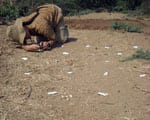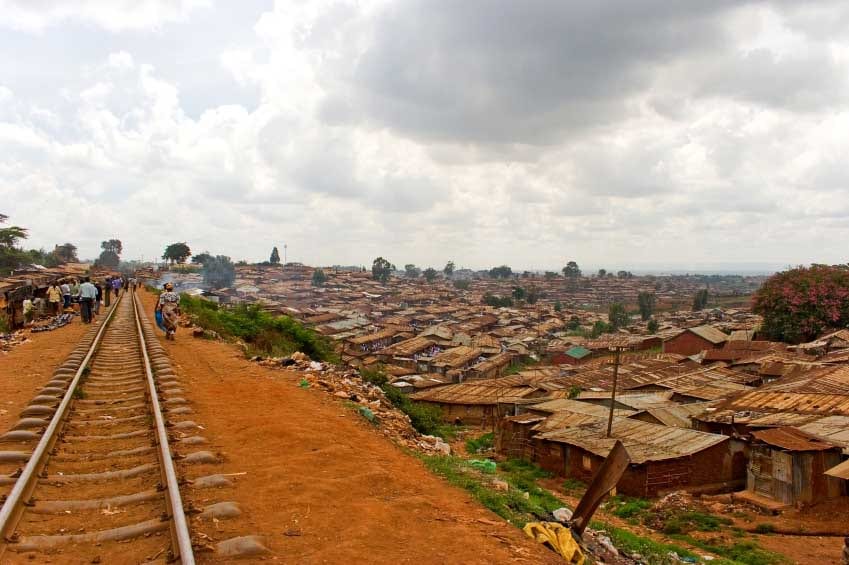Book a live interview

To book a live or taped interview with Peter Weyand in the SMU News Broadcast Studio call SMU News at 214-768-7650 or email news@smu.edu. |
Related links
- Peter Weyand
- Journal of Applied Physiology: “The biological limits to running speed are imposed from the ground up”
- Annette Caldwell Simmons School of Education & Human Development
More SMU Research news
Sports journalist Chuck Klosterman quotes SMU’s Peter Weyand, an expert in human locomotion, in the July 12 article “Is the Fastest Human Ever Already Alive?”
Klosterman looks at the evolution of track’s 100-meter dash and runners’ repeated shattering of the world record for the race. In discussing the mechanics of human speed, he quotes Weyand on how it relates to a runner’s physiology and the force sprinter’s apply to the ground.
Weyand, who is widely quoted in the press for his expertise on human speed, is an SMU associate professor of applied physiology and biomechanics in the Annette Caldwell Simmons School of Education & Human Development.
He led a team of experts in biomechanics and physiology that conducted experiments on Oscar Pistorius, a South African bilateral amputee track athlete. Pistorius has made headlines trying to qualify for races against runners with intact limbs, including the Olympics.
EXCERPT:
By Chuck Klosterman
ESPN Grantland
Allow me to spare you the hyperbole: Usain Bolt is fast.He is, as far as we can tell, the fastest human who’s ever lived — in 2009, at a race in Berlin, he ran the 100-meter dash is 9.58 seconds. This translates to an average speed of just over 23 mph (with a top speed closer to 30 mph). His ’09 performance in Germany was .11 quicker than the 9.69 he ran at the 2008 Beijing Olympics, the fattest chunk ever taken off a world record at that distance. Considering the unadulterated simplicity of his vocation and the historic magnitude of his dominance, it’s easy to argue that Bolt has been the world’s greatest athlete of the past five years. And yet there’s an even easier argument to make than that one: Within the next 10 years, Bolt’s achievements as a sprinter will be completely annihilated.
This is not guaranteed, of course, but it’s certainly more plausible than speculative — for the past 30 years, the men’s record in the 100-meter dash has been assaulted so continually that many of its former record holders don’t even qualify as difficult answers to trivia questions. This was not always the case: Jim Hines broke the 10.0 barrier with a 9.95 at the (high-altitude) 1968 Olympics; that mark stood for 15 years before Calvin Smith ran a 9.93 (also at altitude) in Colorado Springs. But since 1983, the record has been shattered more than a dozen times. Ben Johnson’s steroid-fueled 9.83 in ’87 was the first massive blow, but eight others have chipped away at the record with increasing regularity (Bolt just happened to use a sledge hammer). …
… “The scientific understanding of sprinting is pretty immature,” concedes Peter Weyand, and — since Weyand has become the de facto American expert on the science of sprinting — that tells you just how mysterious this phenomenon is. A physiologist and biomechanist at Southern Methodist University, Weyand specializes in terrestrial locomotion; while at Harvard in the ’90s, he directed experiments at Concord Field Station, a facility where researchers regularly placed animals such as cheetahs,1 wolverines, and kangaroos on treadmills to understand the mechanics of movement. Now 50, Weyand was also a fairly swift runner in his younger days, having run the 100-yard dash in 10.8 as a high school student. “The one thing about sprinting we all understand is that speed comes from how hard the runner’s foot hits the ground. Someone like Bolt is hitting the ground with 1,000 pounds of force, and we just don’t how he does that. For example, we have a very accurate understanding of how much weight someone can lift — we can take a person’s frame and his muscle mass and accurately estimate how much weight he’ll be able to bench press. But world-class sprinters deliver twice as much force as our estimates indicate, and we don’t know why.”
2010 a year of advances for SMU scientific researchers at the vanguard of those helping civilization
- Post author By Margaret Allen
- Post date December 21, 2010
Book a live interview

To book a live or taped interview with an SMU scientist in the SMU News Broadcast Studio call SMU News at 214-768-7650 or email news@smu.edu.
More SMU Research news
From picking apart atomic particles at Switzerland’s CERN, to unraveling the mysterious past, to delving into the human psyche, SMU researchers are in the vanguard of those helping civilization understand more and live better.
With both public and private funding — and the assistance of their students — they are tackling such scientific and social problems as brain diseases, immigration, diabetes, evolution, volcanoes, panic disorders, childhood obesity, cancer, radiation, nuclear test monitoring, dark matter, the effects of drilling in the Barnett Shale, and the architecture of the universe.
The sun never sets on SMU research
Besides working in campus labs and within the Dallas-area community, SMU scientists conduct research throughout the world, including at CERN’s Large Hadron Collider, and in Angola, the Canary Islands, Mongolia, Kenya, Italy, China, the Congo Basin, Ethiopia, Mexico, the Northern Mariana Islands and South Korea.“Research at SMU is exciting and expanding,” says Associate Vice President for Research and Dean of Graduate Studies James E. Quick, a professor in the Huffington Department of Earth Sciences. “Our projects cover a wide range of problems in basic and applied research, from the search for the Higgs particle at the Large Hadron Collider in CERN to the search for new approaches to treat serious diseases. The University looks forward to creating increasing opportunities for undergraduates to become involved as research expands at SMU.”
Funding from public and private sources
In 2009-10, SMU received $25.6 million in external funding for research, up from $16.5 million the previous year.“Research is a business that cannot be grown without investment,” Quick says. “Funding that builds the research enterprise is an investment that will go on giving by enabling the University to attract more federal grants in future years.”
The funding came from public and private sources, including the National Science Foundation; the National Institutes of Health; the U.S. Departments of Agriculture, Defense, Education and Energy; the U.S. Geological Survey; Google.org; the Alfred P. Sloan Foundation; Texas’ own Hogg Foundation for Mental Health; and the Texas Instruments Foundation.
Worldwide, the news media are covering SMU research. See some of the coverage. Browse a sample of the research:
CERN and the origin of our universe
Led by Physics Professor Ryszard Stroynowski, SMU physics researchers belong to the global consortium of scientists investigating the origins of our universe by monitoring high-speed sub-atomic particle collisions at CERN, the world’s largest physics experiment.
Compounds to fight neurodegenerative diseases
Synthetic organic chemist and Chemistry Professor Edward Biehl leads a team developing organic compounds for possible treatment of neurodegenerative diseases such as Parkinson’s, Huntington’s and Alzheimer’s. Preliminary investigation of one compound found it was extremely potent as a strong, nontoxic neuroprotector in mice.Hunting dark matter
Assistant Professor of Physics Jodi Cooley belongs to a high-profile international team of experimental particle physicists searching for elusive dark matter — believed to constitute the bulk of the matter in the universe — at an abandoned underground mine in Minnesota, and soon at an even deeper mine in Canada.
Robotic arms for injured war vets
Electrical Engineering Chairman and Professor Marc Christensen is director of a new $5.6 million center funded by the Department of Defense and industry. The center will develop for war veteran amputees a high-tech robotic arm with fiber-optic connectivity to the brain capable of “feeling” sensations.Green energy from the Earth’s inner heat
The SMU Geothermal Laboratory, under Earth Sciences Professor David Blackwell, has identified and mapped U.S. geothermal resources capable of supplying a green source of commercial power generation, including resources that were much larger than expected under coal-rich West Virginia.Exercise can be magic drug for depression and anxiety
Psychologist Jasper Smits, director of the Anxiety Research and Treatment Program at SMU, says exercise can help many people with depression and anxiety disorders and should be more widely prescribed by mental health care providers.The traditional treatments of cognitive behavioral therapy and pharmacotherapy don’t reach everyone who needs them, says Smits, an associate professor of psychology.
Virtual reality “dates” to prevent victimization
SMU psychologists Ernest Jouriles, Renee McDonald and Lorelei Simpson have partnered with SMU Guildhall in developing an interactive video gaming environment where women on virtual-reality dates can learn and practice assertiveness skills to prevent sexual victimization.With assertive resistance training, young women have reduced how often they are sexually victimized, the psychologists say.
Controlled drug delivery agents for diabetes
Associate Chemistry Professor Brent Sumerlin leads a team of SMU chemistry researchers — including postdoctoral, graduate and undergraduate students — who fuse the fields of polymer, organic and biochemistries to develop novel materials with composite properties. Their research includes developing nano-scale polymer particles to deliver insulin to diabetics.
Sumerlin, associate professor of chemistry, was named a 2010-2012 Alfred P. Sloan Research Fellow, which carries a $50,000 national award to support his research.
Human speed
An expert on the locomotion of humans and other terrestrial animals, Associate Professor of Applied Physiology and Biomechanics Peter Weyand has analyzed the biomechanics of world-class athletes Usain Bolt and Oscar Pistorius. His research targets the relationships between muscle function, metabolic energy expenditure, whole body mechanics and performance.
Weyand’s research also looks at why smaller people tire faster. Finding that they have to take more steps to cover the same distance or travel at the same speed, he and other scientists derived an equation that can be used to calculate the energetic cost of walking.
Pacific Ring of Fire volcano monitoring
An SMU team of earth scientists led by Professor and Research Dean James Quick works with the U.S. Geological Survey to monitor volcanoes in the Pacific Ocean’s Ring of Fire near Guam on the Northern Mariana Islands. Their research will help predict and anticipate hazards to the islands, the U.S. military and commercial jets.
The two-year, $250,000 project will use infrasound — in addition to more conventional seismic monitoring — to “listen” for signs a volcano is about to blow.
Reducing anxiety and asthma
A system of monitoring breathing to reduce CO2 intake is proving useful for reducing the pain of chronic asthma and panic disorder in separate studies by Associate Psychology Professor Thomas Ritz and Assistant Psychology Professor Alicia Meuret.
The two have developed the four-week program to teach asthmatics and those with panic disorder how to better control their condition by changing the way they breathe.
Breast Cancer community engagement
Assistant Psychology Professor Georita Friersen is working with African-American and Hispanic women in Dallas to address the quality-of-life issues they face surrounding health care, particularly during diagnosis and treatment of breast cancer.
Friersen also examines health disparities regarding prevention and treatment of chronic diseases among medically underserved women and men.
Paleoclimate in humans’ first environment
Paleobotanist and Associate Earth Sciences Professor Bonnie Jacobs researches ancient Africa’s vegetation to better understand the environmental and ecological context in which our ancient human ancestors and other mammals evolved.
Jacobs is part of an international team of researchers who combine independent lines of evidence from various fossil and geochemical sources to reconstruct the prehistoric climate, landscape and ecosystems of Ethiopia in particular. She also identifies and prepares flora fossil discoveries for Ethiopia’s national museum.
Ice Age humans
Anthropology Professor David Meltzer explores the western Rockies of Colorado to understand the prehistoric Folsom hunters who adapted to high-elevation environments during the Ice Age.Meltzer, a world-recognized expert on paleoIndians and early human migration from eastern continents to North America, was inducted into the National Academy of Scientists in 2009.
Understanding evolution
The research of paleontologist Alisa WInkler focuses on the systematics, paleobiogeography and paleoecology of fossil mammals, in particular rodents and rabbits.
Her study of prehistoric rodents in East Africa and Texas, such as the portion of jaw fossil pictured, is helping shed more light on human evolution.
- Tags Alicia Meuret, Alisa J. WInkler, Bonnie F. Jacobs, Brent Sumerlin, David Blackwell, David Meltzer, Edward Biehl, Ernest Jouriles, Georita Friersen, James E. Quick, Jasper Smits, Jodi Cooley, Lorelei Simpson, Lorelei Simpson Rowe, Marc Christensen, Peter Weyand, Renee McDonald, Ryszard Stroynowski, Thomas Ritz
Discovery News: Why walking is harder for smaller people
- Post author By Margaret Allen
- Post date November 17, 2010
A Nov. 15 article on Discovery News cites the research of SMU physiologist and biomechanist Peter Weyand in which he and other scientists found that everyone uses about the same amount of energy when they walk, but short people use more energy over a given distance. The reason: people with shorter legs take more steps to cover the same distance as people with longer legs.
Weyand says the study has clinical applications and weight balance applications. In addition, the military is interested too because metabolic rates influence the physiological status of soldiers in the field, he said.
Also covering the research is MSNBC with the story Take that, Stretch! Short people burn more calories walking, and UPI, with its story Equation calculates energy cost of walking.
Weyand is an SMU associate professor of applied physiology and biomechanics in the Annette Caldwell Simmons School of Education & Human Development. He led a team of experts in biomechanics and physiology that conducted experiments on Oscar Pistorius, a South African bilateral amputee track athlete. Pistorius has made headlines trying to qualify for races against runners with intact limbs, including the Olympics.
Excerpt:
By Liz Day
Discovery News
Why do children tire more quickly than adults when out for a walk?Like most people who have had to carry a tired child home after a long walk, Peter Weyand of Southern Methodist University asked himself that same question. Scientists had long recognized that smaller people use more energy per kilogram body mass than larger individuals when walking.
He wanted to know why.
The reason smaller people use more energy is not due to a different gait or a less efficient metabolic rate per stride. The key was something simpler: their height.
Smaller people tire faster because they take more steps to cover the same distance or travel the same steps as taller people. Their strides are shorter.
Weyand teamed up with three other researchers to study the issue. Their findings are published in the Journal of Experimental Biology.
To test the cost of walking, the team measured the metabolic rates of children and adults. Participants ranged from 5 to 32 years old, from 35 to 195 lbs and from 3’6 to a little over 6 feet tall.
The volunteers were filmed walking on treadmills. Their oxygen consumption and carbon dioxide production were measured to gauge their metabolic rate.
The team compared their walks too — measuring their strides, the way they walked, stride durations and the proportion of each stride spent in contact with the ground.
Results showed everyone moved in the exact same way, no matter if they were 4 feet or 6 feet tall. Analysis also found that everyone used the same amount of energy per stride, regardless of height. So, the energy discrepancy was not due to the style of walking.
Finally, the researchers plotted walkers’ heights against their minimum energy expenditure. The results excited them. The walkers’ energy costs were almost perfectly inversely proportional to their heights. Ergo, tall people walk more economically because they have longer strides and take fewer steps to cover the same distance.
Book a live interview

To book a live or taped interview with Peter Weyand in the SMU News Broadcast Studio call SMU News at 214-768-7650 or email news@smu.edu.
Related links
- Peter Weyand
- Journal of Applied Physiology: “The biological limits to running speed are imposed from the ground up”
- Annette Caldwell Simmons School of Education & Human Development
More SMU Research news

Evidence weak for tropical rainforest 65 million years ago in Africa’s low-latitudes

Veterinary medicine shifts to more women, fewer men; pattern will repeat in medicine, law fields

SMU Geothermal Lab: Large, green energy source in West Va. coal country

No evidence for ancient comet causing Clovis catastrophe, archaeologists say

DOD, industry fund $5.6 million SMU-led research for hi-tech prosthetics
MSNBC: Take that, Stretch! Short people burn more calories walking
- Post author By Margaret Allen
- Post date November 15, 2010
Book a live interview

To book a live or taped interview with Peter Weyand in the SMU News Broadcast Studio call SMU News at 214-768-7650 or email news@smu.edu.
Related links
More SMU Research news
A Nov. 12 article on MSNBC cites the research of SMU physiologist and biomechanist Peter Weyand in which he and other scientists found that everyone uses about the same amount of energy when they walk, but short people use more energy over a given distance. The reason: people with shorter legs take more steps to cover the same distance as people with longer legs.
Weyand says the study has clinical applications and weight balance applications. In addition, the military is interested too because metabolic rates influence the physiological status of soldiers in the field, he said.
Also covering the research is UPI, with the story Equation calculates energy cost of walking.
Weyand is an SMU associate professor of applied physiology and biomechanics in the Annette Caldwell Simmons School of Education & Human Development. He lead a team of experts in biomechanics and physiology that conducted experiments on Oscar Pistorius, a South African bilateral amputee track athlete. Pistorius has made headlines trying to qualify for races against runners with intact limbs, including the Olympics.
Excerpt:
By Rachel Rettner
MSNBC
Scientists have come up with a new equation to determine how much energy people actually use while walking.While previous work has conjured many ways to measure the energy cost of walking, the new equation is among the first to account for the impact of body size, taking into account individuals’ height and weight.
The equation has many possible applications. It could be used to design pedometers that, in addition to distance walked, provide an estimate of calories burned, taking into account a person’s body size. The military may also find the equation handy, possibly using it to calculate how much energy soldiers expend — and thus how many calories they will need — while carrying different loads, said study researcher Peter Weyand, of Southern Methodist University in Dallas.
The findings are published today (Nov. 12) in the Journal of Experimental Biology.
Why height and weight matter .Scientists knew that shorter people, including children, use up more energy per pound of their body mass when walking than taller people, but they didn’t know why.
How much energy does it take to walk? New equation is first to calculate cost of walking
- Post author By Margaret Allen
- Post date November 12, 2010
Book a live interview

To book a live or taped interview with Peter Weyand in the SMU News Broadcast Studio call SMU News at 214-768-7650 or email news@smu.edu.
Related links
- Peter Weyand
- “The mass-specific energy cost of human walking is set by stature”
- Journal of Applied Physiology: “The biological limits to running speed are imposed from the ground up”
- Annette Caldwell Simmons School of Education & Human Development
More SMU Research news
Any parent that takes their kid out for a walk knows that children tire more quickly than adults, but why is that? Do kids and small adults walk differently from taller people or do they tire faster for some other reason?
Peter Weyand from Southern Methodist University is fascinated by the effect that body size has on physiological function.
“This goes back to Max Kleiber’s work on resting metabolic rates for different sized animals. He found that the bigger you are the slower each gram of tissue uses energy,” explains Weyand, who adds, “It’s interesting to know how and why metabolism is regulated that way.”
Intrigued by the question of why smaller people use more energy per kilogram body mass than larger individuals when walking, Weyand teamed up with Maurice Puyau and Nancy Butte, from the USDA/ARS Children’s Nutrition Research Center at Baylor College of Medicine, and undergraduate Bethany Smith.
Together they decided to measure the metabolic rates of children and adults, ranging from 5 to 32 years old, weighing between 15.9 kilograms and 88.7 kilograms and ranging in height from 1.07 meters to 1.83 meters, to try to find out why larger people are more economical walkers than smaller people.
Weyand and his colleagues publish their discovery that walkers of all heights use the same amount of energy per stride, making short people less economical because they take more steps. They also derive a fundamental equation to calculate exactly how much energy walkers use with direct applications in all walks of life. The team published its discovery in the article “The mass-specific energy cost of human walking is set by stature” in the current issue of The Journal of Experimental Biology.
First Weyand and colleagues filmed male and female volunteers as they walked on a treadmill at speeds ranging from a slow 0.4 meters per second up to 1.9 meters per second. Meanwhile, they simultaneously measured the walkers’ oxygen consumption and carbon dioxide production rates to obtain their total metabolic rate.
Next the team calculated the amount of energy that each person used for walking by subtracting the basal metabolic rate (energy required to maintain the body’s basic metabolic functions) from the total metabolic rate measured while walking. Finally, the team compared the way each person walked, measuring the walkers’ stride lengths, stride durations and the proportion of each stride they spent in contact with the ground (duty factor) to find out if large and small people walk differently.
Analysing the walkers’ styles, the team found that all of them moved in exactly the same way regardless of their height. Essentially, if you scaled a 5 year old up to 2 meters, the giant child would walk in exactly the same way as a 2 meter tall adult. So large people are not more economical because they walk differently from smaller people.
Next the team calculated the metabolic cost of a stride as each walker moved at their most economical pace and they discovered that walkers use the same amount of energy per stride regardless of their height. So, big people do not become more economical because they walk in a more economical style. Something else must account for their increased economy.
Finally, the four scientists plotted the walkers’ heights against their minimum energy expenditure and they were amazed when they got a straight line with a gradient of almost -1. The walkers’ energy costs were inversely proportional to their heights, with tall people walking more economically than short/smaller people because they have longer strides and have to take fewer steps to cover the same distance. So smaller people tire faster because each step costs the same and they have to take more steps to cover the same distance or travel at the same speed.
Based on this discovery the group derived an equation that can be used to calculate the energetic cost of walking.
“The equation allows you to use your height, weight and distance walked to determine how many calories you burn,” says Weyand.
The equation could also be built into popular pedometers to provide users with a more realistic idea of how many calories they expend walking throughout the day. Finally, the team is keen to extend the equation to calculate metabolic costs at any speed.
“This has clinical applications, weight balance applications and the military is interested too because metabolic rates influence the physiological status of soldiers in the field,” explains Weyand. — Kathryn Knight, The Company of Biologists





















